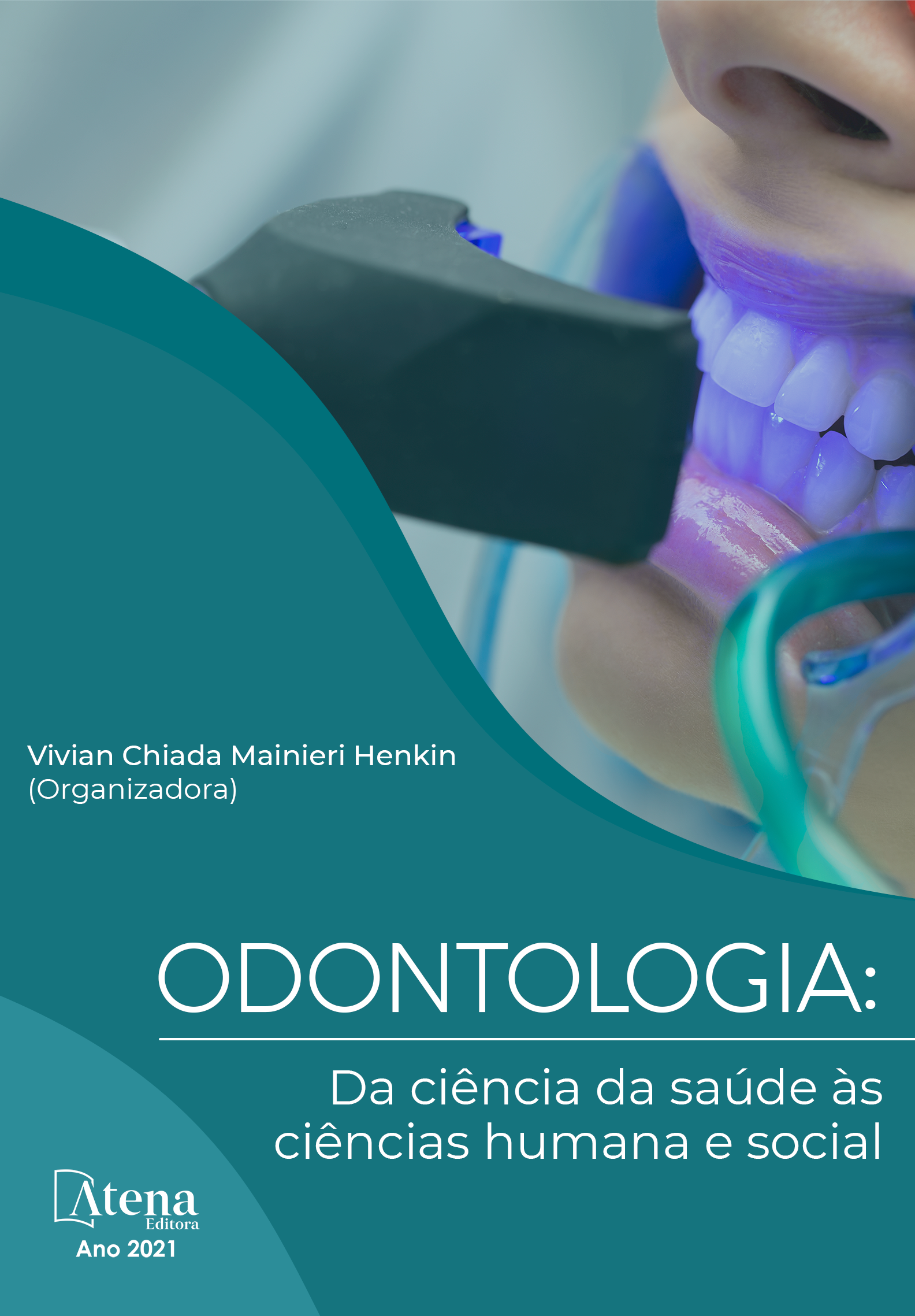
INFLUENCE OF LASER Er,Cr:YSGG ASSOCIATED OR NOT WITH FLUORIDE VARNISH IN THE DENTIN ACID RESISTANCE AFTER EROSIVE CHALLENGE
Dental erosion is characterized by an irreversible loss of enamel and dentin, induced by acids, intrinsic and/or extrinsic, without the action of microorganisms. Several treatments have been proposed to minimize this problem. Thus, the aim of this study was to evaluate the influence of Er,Cr:YSGG laser associated or not with 5% fluoride varnish on dentin acid resistance after erosive challenge. Twenty bovine incisors were selected and sectioned, obtaining 40 specimens of 4mm x 4mm and randomly divided into 8 groups (n=5). In G1: Er,Cr:YSGG laser application (0.1W; 5Hz; air 55%); G2: Er,Cr:YSGG laser irradiation (0.25W; 5Hz; air 55%); G3: fluoride varnish + Er,Cr:YSGG (0.1W; 5Hz; air 55%); G4: fluoride varnish + Er,Cr:YSGG (0.25W; 5Hz; air 55%); G5: fluoride varnish + Er,Cr:YSGG (0.1W; 5Hz; no air application); G6: fluoride varnish + Er,Cr:YSGG (0.25W; 5Hz; no air application); G7: application of fluoride varnish (positive control) and G8: no treatment (negative control). Each group was submitted to erosive challenge with immersion in Coca-Cola® for 1 minute, twice a day, for 5 days. The specimens were analyzed by confocal laser scanning microscopy, which evaluated the dentin wear profile (percentage of volume loss). For the wear profile, the Kruskal-Wallis test and the Dunn post-test were used. All these tests adopted a significance level of 5% (α=0.05). Regarding the percentage of lost volume, groups G5 and G6 had the best results (G5=8.2% and G6=9.7%), with the lowest loss of dentin volume compared to the other groups (p<0, 05). The G8 group (without treatment) had the greatest volume loss (G8=45.3%), followed by the G7 group (fluoride varnish), which presented 27.9%. It is concluded that the use of Er,Cr:YSGG laser associated with fluoride varnish increased the acid resistance of bovine dentin after erosive challenge.
INFLUENCE OF LASER Er,Cr:YSGG ASSOCIATED OR NOT WITH FLUORIDE VARNISH IN THE DENTIN ACID RESISTANCE AFTER EROSIVE CHALLENGE
-
Palavras-chave: Dental erosion; Sodium Fluoride; YSGG laser; Preventive therapy
-
Keywords: Dental erosion; Sodium Fluoride; YSGG laser; Preventive therapy
-
Abstract:
Dental erosion is characterized by an irreversible loss of enamel and dentin, induced by acids, intrinsic and/or extrinsic, without the action of microorganisms. Several treatments have been proposed to minimize this problem. Thus, the aim of this study was to evaluate the influence of Er,Cr:YSGG laser associated or not with 5% fluoride varnish on dentin acid resistance after erosive challenge. Twenty bovine incisors were selected and sectioned, obtaining 40 specimens of 4mm x 4mm and randomly divided into 8 groups (n=5). In G1: Er,Cr:YSGG laser application (0.1W; 5Hz; air 55%); G2: Er,Cr:YSGG laser irradiation (0.25W; 5Hz; air 55%); G3: fluoride varnish + Er,Cr:YSGG (0.1W; 5Hz; air 55%); G4: fluoride varnish + Er,Cr:YSGG (0.25W; 5Hz; air 55%); G5: fluoride varnish + Er,Cr:YSGG (0.1W; 5Hz; no air application); G6: fluoride varnish + Er,Cr:YSGG (0.25W; 5Hz; no air application); G7: application of fluoride varnish (positive control) and G8: no treatment (negative control). Each group was submitted to erosive challenge with immersion in Coca-Cola® for 1 minute, twice a day, for 5 days. The specimens were analyzed by confocal laser scanning microscopy, which evaluated the dentin wear profile (percentage of volume loss). For the wear profile, the Kruskal-Wallis test and the Dunn post-test were used. All these tests adopted a significance level of 5% (α=0.05). Regarding the percentage of lost volume, groups G5 and G6 had the best results (G5=8.2% and G6=9.7%), with the lowest loss of dentin volume compared to the other groups (p<0, 05). The G8 group (without treatment) had the greatest volume loss (G8=45.3%), followed by the G7 group (fluoride varnish), which presented 27.9%. It is concluded that the use of Er,Cr:YSGG laser associated with fluoride varnish increased the acid resistance of bovine dentin after erosive challenge.
-
Número de páginas: 15
- ARIANE BEATRIZ BLANCATO
- PATRÍCIA FERREIRA FRANCINO RIBEIRO
- VINÍCIUS RANGEL GERALDO-MARTINS
- JULIANA JENDIROBA FARAONI
- REGINA GUENKA PALMA DIBB
- MARIA ANGELICA HUEB DE MENEZES OLIVEIRA
- CESAR PENAZZO LEPRI
- Carla Silva Carvalho


